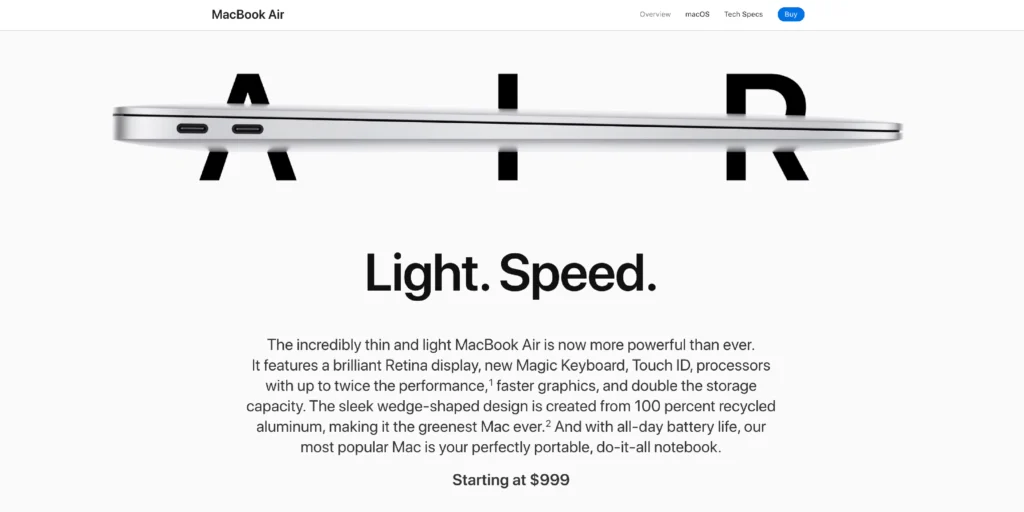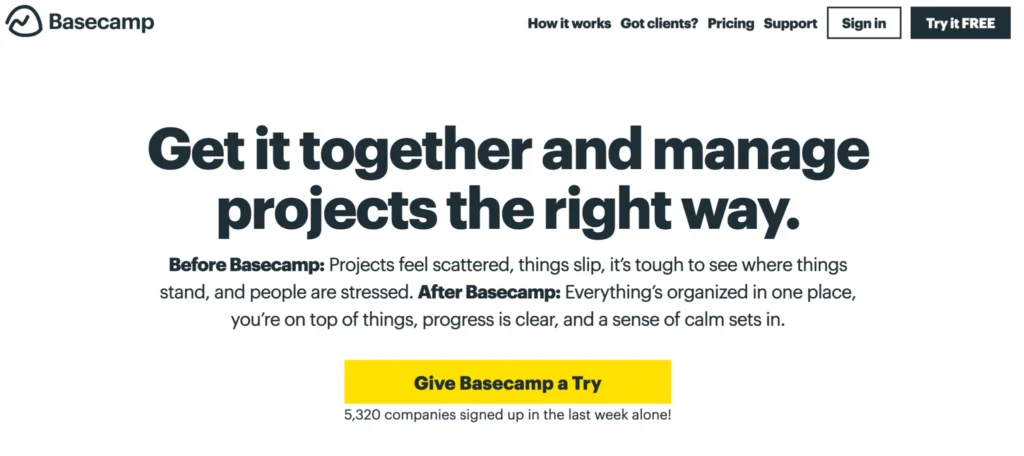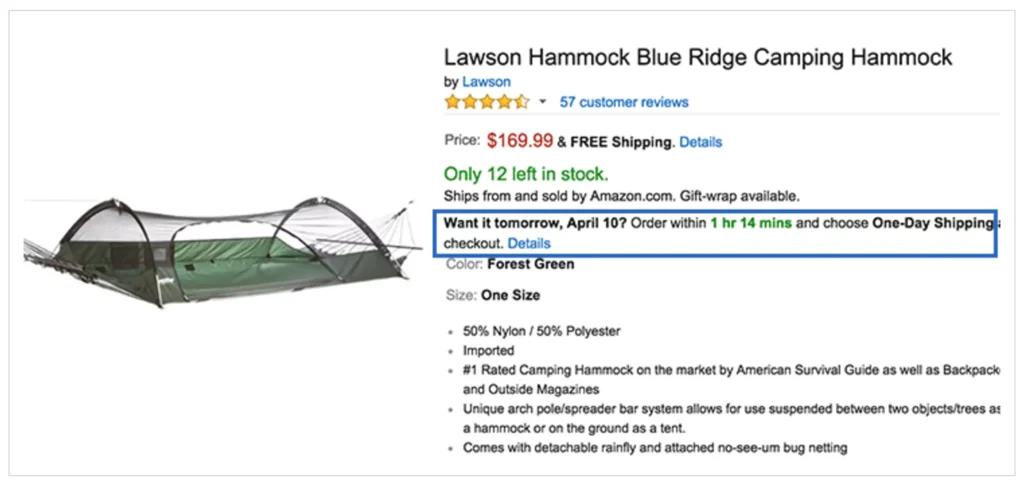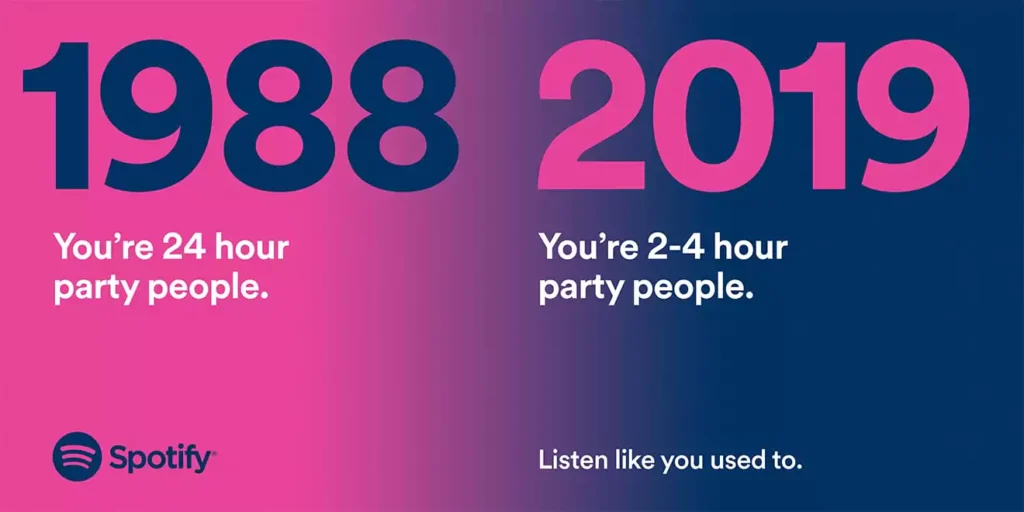Copywriting Tips: Techniques and Strategies for Compelling Copy
Whether you're writing a sales page, email, social media post, or blog, your words have power. Compelling copy can grab attention, spark emotion, and motivate action. Boring copy does none of that.
In today's noisy online world, crafting copy that cuts through the clutter and connects with readers is essential. The difference between mediocre and persuasive writing often comes from mastering basic copywriting techniques.
In this post, I'll share my favourite copywriting tips and strategies for writing hypnotic headlines, irresistible offers, compelling content, and more. You'll learn frameworks for structuring persuasive copy, tricks for triggering emotion, and formulas for boosting conversions.
These battle-tested copywriting techniques will help you engage more readers and customers. You'll be able to create content people love to read and actions they can't resist taking. Let's dive in!
Table of Contents
Copywriting Tips to Improve Conversions

To boost conversion rates, you should use several vital copywriting techniques. These techniques are proven to focus attention, stir emotion and compel readers to act.
One technique is to write solid and compelling headlines that instantly grab your reader’s attention and spark their curiosity. For example: ‘Unlock Your Potential with Our Proven Marketing Strategies.’ This headline clarifies what the product or service does but hints at more.
Another technique is to concentrate on selling the benefits of your product or service – rather than just its features. Explain how your offering will solve the audience’s problems – or improve their lives. The stronger the desire you build for a benefit, the more likely people are to take action.
Storytelling can be highly effective, too. Humans love stories, and narratives create an emotional connection that can be very powerful indeed. Use anecdotes, customer success stories or your journey as examples of how your offering has made a difference in practice. If someone sells software that drives business admin easier, they might tell a story about one customer whose life was transformed by wasting less time on paperwork.
Lastly, creating urgency can effectively drive conversions because it triggers fear of missing out (FOMO). Limited-time offers (LTOs), exclusive deals and countdown timers all do this well, so get them into your writing where appropriate.
So if company X has some kind of special discount available for only a short period, make sure that comes across loud and clear because it will encourage people not to hang around when thinking about buying from them instead of someone else.
How to Create Compelling Headline Copy

Being able to capture the attention of your audience with a thorough headline is one of the most crucial skills in copywriting. The fact of the matter is, if you don’t have a great headline, there’s very little chance that people will continue reading what you’ve written. With that in mind, here are some tips for writing headlines to grab people’s attention.
- Be clear and concise: Your headline should communicate your product or service's main benefit or unique selling point (USP). It should be succinct and avoid jargon or complex language that may confuse readers. For example, rather than saying something like ‘Find out how our proven marketing strategies can help boost your business’, say something more straightforward like ‘Boost your business’.
- Use strong action words: Using powerful words that suggest actions in headlines makes them stand out while also evoking emotion within readers. Some examples include discover, transform, unleash and master.
- Address a specific pain point: If you identify a particular problem an audience has and address it directly within a headline, they will want to read on further, as this means what you’ve written applies now to them. For example, something like “Say goodbye to acne forever” would work well.
- Make it unique/memorable: By giving people a reason why they shouldn't just go on Google and search for other similar products/services, you will immediately make yourself stand out from competitors. Something like “Experience adventure like never before” works well here, and so does anything else which adds exclusivity, e.g.”exclusive eco-tours”.
It’s worth remembering that when it comes down to it, the first impression somebody gets about what you’ve got isn’t based on any kind of introduction – but instead whatever 10-12 word sentence appears at the top of the page. This is why having such things nailed when creating copy is so important.
The Importance of Understanding the Target Audience in Copywriting

Understanding your target audience is paramount in copywriting, as it allows you to hone your message to fit their unique needs, desires and areas of pain. By knowing your audience inside and out, you can create copy that speaks directly to their motivations and resonates with them.
When you truly understand your audience, you can use language, tone and messaging that appeals specifically to them. You will be able to speak directly to their challenges and concerns, highlight vital benefits for them and employ references/examples they are likely to relate personally to – all helping make a big difference in conversion rates.
To begin fully understanding your target audience, conduct thorough market research. Once you have done this, work on creating buyer personas that can represent an ideal customer or customer group; include key demographic info/motivations/pain points/goals, etc. Using these should enable you to focus on creating copy where all those angles meet head-on.
For example, if selling skincare products aimed at millennials, any accompanying copy needs to reflect their desire for natural/eco-friendly solutions while addressing some common skin-related issues in this age range. Knowing what preferences/pain points exist within your target audience helps shape more powerful copy that resonates better with its desired recipients – potentially encouraging action, too!
How to Incorporate Persuasive Language and Storytelling

Incorporating persuasive language and storytelling techniques into your copy can significantly enhance its impact and engagement. These techniques tap into human psychology and help you connect with your audience more deeply. Here are some strategies to effectively incorporate persuasive language and storytelling into your copy:
- Use emotional appeals: Humans are emotional beings, and emotions play a significant role in decision-making. Using persuasive language that evokes emotions can create a stronger connection with your audience. Tap into their desires, fears, or aspirations and use language that resonates with those emotions. This can be achieved through vivid and sensory descriptions, relatable anecdotes, or powerful metaphors. For example, a fitness brand might use emotional language like “Unleash the power within you and transform your body into a lean, energetic machine.” This language taps into the desire for self-improvement and the emotional satisfaction of achieving personal fitness goals.
- Tell a compelling story: Storytelling is a powerful tool in copywriting as it captivates readers and helps them visualise the benefits or solutions your product or service offers. Craft a narrative that engages your audience, taking them on a journey from the problem they're facing to the answer you provide. Use relatable characters, vivid descriptions, and a clear story arc to make your story memorable. For instance, a financial planning service might tell the story of a couple struggling with debt and financial stress. They describe their journey towards financial freedom and how the financial planning service helped them achieve their goals. This story creates an emotional connection and demonstrates the positive impact of the service.
- Highlight the benefits: Persuasive copy should focus on the benefits your audience will experience. Communicate how your product or service can solve their problems, improve their lives, or fulfil their desires. Paint a vivid picture of the positive outcomes they can expect using your offering. For example, a travel agency promoting a luxury vacation package might highlight the benefits of relaxation, rejuvenation, and unforgettable experiences. They could describe the breathtaking views, the pampering amenities, and the sense of adventure that awaits, creating a strong desire to experience those benefits.
- Use social proof: People often look to others for guidance and validation. Incorporating social proof in your copy can build credibility and trust. Include testimonials, reviews, case studies, or endorsements from satisfied customers or industry experts to demonstrate the positive experiences others have had with your product or service. For instance, an e-commerce website might display customer reviews and ratings on its product pages. These testimonials prove the product's quality and reliability, helping potential customers make informed purchasing decisions.
By incorporating persuasive language and storytelling into your copy, you can create a deeper connection with your audience, engage their emotions, and compel them to take action.
Strategies for Creating a Sense of Urgency in Copywriting

Creating a sense of urgency in your copy is a powerful technique to motivate your audience to take immediate action. You can drive conversions by instilling a fear of missing out or highlighting time-limited opportunities. Here are some effective strategies for creating a sense of urgency in your copy:
- Limited-time offers: Communicate that a special offer or discount is only available for a limited period. This creates a fear of missing out and encourages prompt action. For example, an e-commerce store might have a limited-time sale with a countdown timer to make a sense of urgency.
- Countdown timers: Displaying a countdown timer can visually represent urgency and prompt immediate action. Countdown timers are particularly effective for limited-time promotions, flash sales, or product launches. Seeing the time ticking down creates a sense of urgency and intensifies the desire to take advantage of the offer before it expires.
- Limited availability: Emphasise limited stock, narrow spots, or little product or service availability to convey scarcity. This scarcity can create a sense of urgency and prompt immediate action. For example, a hotel booking website might highlight that only a few rooms are left at a discounted rate, prompting customers to book quickly.
- Highlight time-sensitive benefits: Illustrate the immediate benefits or advantages your audience will gain by taking action now. Communicate how they will lose out if they delay their decision. For instance, a fitness program might emphasise the rapid results that can be achieved by starting immediately, creating a sense of urgency to join now and not miss out on those benefits.
By incorporating these strategies into your copy, you can create a sense of urgency that compels your audience to take immediate action, increasing the likelihood of conversions.
How to Use Social Proof and Testimonials to Enhance Copy

Social proof and testimonials are compelling tools to enhance your copy and build trust with your audience. They help you overcome scepticism, up the credibility of your words, and demonstrate positive experiences others have had.
Here’s how to make them work for your business:
Use customer testimonials
Incorporate glowing feedback from happy customers who’ve experienced incredible results using your product or service. To make this social proof more credible, always include full names and relevant details about the person singing your praises.
Be sure to emphasise any improvements they enjoyed or specific benefits from doing business with you.
An example: “I lost three stone in six months – my energy levels skyrocketed!” – Jane Smith
Display reviews and ratings
Positive comments from respected sources that rate your work can reassure potential clients. They prove that others are pleased with their purchase/interactions with you. Don’t forget to mention if something significant has been won or achieved along the way!
Feature case studies
Describe how your offering solved someone’s problem or delivered truly outstanding results for a client. Case studies prove what you say is true while providing real-world examples of success.
Consider outlining the challenge faced, the solution implemented, and the result achieved (in numbers, if possible). For example: “We helped XYZ company increase web traffic by 150% through targeted content marketing.”
Include endorsements
Let everyone know if an influential figure in your industry/well-known personality loves what you do! Endorsements provide instant credibility because they prove prominent people respect what you’re selling/offering too.
Choose endorsements wisely; ensure they’ll resonate with the type of person likely to buy from/smear themselves in/be associated with whatever makes up your brand/business/magic formula stuff.
By incorporating these elements intelligently into every piece of copy you write, you’ll quickly build trust, overcome objections, and make potential clients even more confident they’ve come to the right place.
Best Practices for Writing Clear and Concise Copy
Writing clear and concise copy is essential to ensure your message is easily understood and effectively communicated. Clarity and conciseness improve readability and engagement, increasing the chances of your audience taking the desired action. Here are some best practices to follow when writing clear and concise copy:
- Keep sentences and paragraphs short: Use concise sentences and break your text into short sections. This makes it easier for readers to digest the information and improves readability. Long, convoluted sentences or paragraphs can be overwhelming and lead to reader disengagement.
- Use bullet points or numbered lists: When presenting information that can be organised in a list format, use bullet points or numbered lists. This helps to manage the content and make it more scannable. Bulleted or numbered lists also help to break up long blocks of text and improve visual appeal.
- Avoid jargon and technical language: Write in a language your target audience can easily understand. Avoid using technical terms or industry jargon that may confuse or alienate your readers. Instead, use simple language that communicates your message.
- Focus on one main idea per paragraph: Each paragraph should convey one main idea. This helps to maintain clarity and prevents your copy from becoming cluttered or overwhelming—transition between paragraphs to guide the reader through the flow of your copy.
By following these best practices, you can ensure that your copy is concise and effectively communicates your message, leading to better engagement and increased conversions.
How to Test and Optimise Copy for Better Results
To improve the effectiveness of your copy and maximise conversions, it is crucial to test and optimise. Continuous testing and optimisation can refine your copy based on data and insights, ensuring it resonates with your audience and drives desired actions. Here are some strategies to consider for testing and optimising your copy:
- A/B testing: Create multiple versions of your copy, then test these versions against each other in an A/B test to see which performs better. Compare headlines or calls to action, storytelling approaches or design elements. This will help you make data-driven decisions about what works best in practice.
- Track and analyse metrics: Monitor critical metrics such as click-through rates (CTR), conversion rates (CR), bounce rates (BR) or time on page (TOP) to understand how well the copy is performing. Use analytics tools to gather data around these metrics to spot areas for improvement and identify strengths, weaknesses, and opportunities for optimisation.
- Collect feedback: Gather feedback from users via surveys, focus groups, user testing or social listening; this will give you valuable insights into how people perceive the copy – helping inform optimisations going forward. You might ask about messaging clarity, whether the copy addresses their needs, etc.
- Iterate & refine: Continuously iterate & refine the copy based on insight & data gathered — Example? Test different variations, make adjustments & analyse the impact on CTRs, and implement changes informed by feedback/data – always aiming for further performance optimisation.
Regularly testing and optimising copies like this example above does not mention the benefits of doing so once more prior sentence could be deleted. You can achieve better results, including improved performance, increased conversions, etc.
What Is the Difference Between Conversion Copywriting and SEO Copywriting?

Conversion and SEO copywriting serve different purposes but can work together to achieve overall marketing goals. Understanding the difference between the two is essential for creating copy that engages your audience and drives organic traffic. Let's explore the distinctions between conversion copywriting and SEO copywriting:
Conversion copywriting focuses on driving conversions and encouraging readers to take a specific action, such as purchasing or signing up for a newsletter. It is highly focused on the persuasive elements of copy and aims to motivate the audience to take immediate action. Conversion copywriting uses persuasive language, storytelling techniques, and a deep understanding of consumer psychology to engage and drive conversions.
On the other hand, SEO copywriting is tailored for search engine optimisation. It involves incorporating relevant keywords and optimising meta tags, headings, and other on-page elements to rank higher in search engine results. SEO copywriting aims to attract organic traffic and increase visibility by aligning with search engine algorithms and user search intent. Effective SEO copywriting requires keyword research, understanding search trends, and optimising the copy for readers and search engines.
While their objectives differ, conversion and SEO copywriting can complement each other. By incorporating SEO techniques into your conversion-focused copy, you can increase your reach and attract more potential customers. Creating content that ranks well in search engines can drive more organic traffic to your website, increasing the chances of conversions. Combining conversion and SEO copywriting techniques allows you to create copy that engages readers, drives conversions, and attracts organic traffic.
Examples of Effective Conversion Copywriting

Learning from real-life examples is a great way to understand effective conversion copywriting. Let's explore some examples of brands and campaigns that have successfully utilised conversion copywriting techniques:
Spotify: Spotify's homepage copy effectively highlights the benefits of their music streaming service: “Unlimited Music. Endless Possibilities.” This concise headline communicates the value of unlimited music and creates a sense of excitement and curiosity, encouraging visitors to explore further.
Black Girl Sunscreen: Black Girl Sunscreen's headline speaks directly to its target audience and addresses a specific need: “Melanin-Friendly Sunscreen for Beautiful Brown Skin.” This headline resonates with black women who have experienced challenges finding a sunscreen that works for their skin tone. It communicates the unique benefit of their product and instantly captures the attention of their target audience.
Ann Handley: Ann Handley, a renowned writer and marketer, effectively uses conversion copywriting on her website. Her headline, “Learn to Write Better. With Ann Handley.” positions her as an authority in writing and promises to help readers improve their writing skills. By offering a clear benefit and leveraging her expertise, she entices her audience to engage with her content.
Uber: Uber's tagline, “Get There. Your Day Belongs to You.” emphasises their transportation service's convenience and freedom. This concise and action-oriented copy captures the attention of busy individuals seeking flexibility and control over their day.
Kate Bradley Chernis: Kate Bradley Chernis, CEO of Lately, uses persuasive copywriting techniques to engage her audience. Her headline, “Marketing Made Simple. Finally.” instantly communicates the benefit of simplicity – something all marketers crave – positioning herself as its deliverer while also using persuasive language like ‘finally’ which triggers an emotional response in people who feel overwhelmed or behind in any area (like marketing). It’s very attuned to getting noticed and remembered/responded to, i.e. > conversions.
These examples demonstrate the power of compelling headlines, benefits-focused copy, and audience-oriented language in driving conversions. By studying successful models and understanding their techniques, you can apply similar principles to your copywriting to achieve better results.
Conclusion
Effective copywriting combines creativity, strategy, and understanding of your target audience. By implementing the copywriting techniques discussed in this comprehensive guide, you can create compelling and impactful copy that engages your audience and drives conversions.
Remember to focus on making attention-grabbing headlines, incorporating persuasive language and storytelling, creating a sense of urgency, leveraging social proof and testimonials, writing clear and concise copy, and continuously testing and optimising your copy for better results. With these strategies in your toolkit, you'll be well-equipped to craft copy that captivates your audience and achieves your marketing goals.
